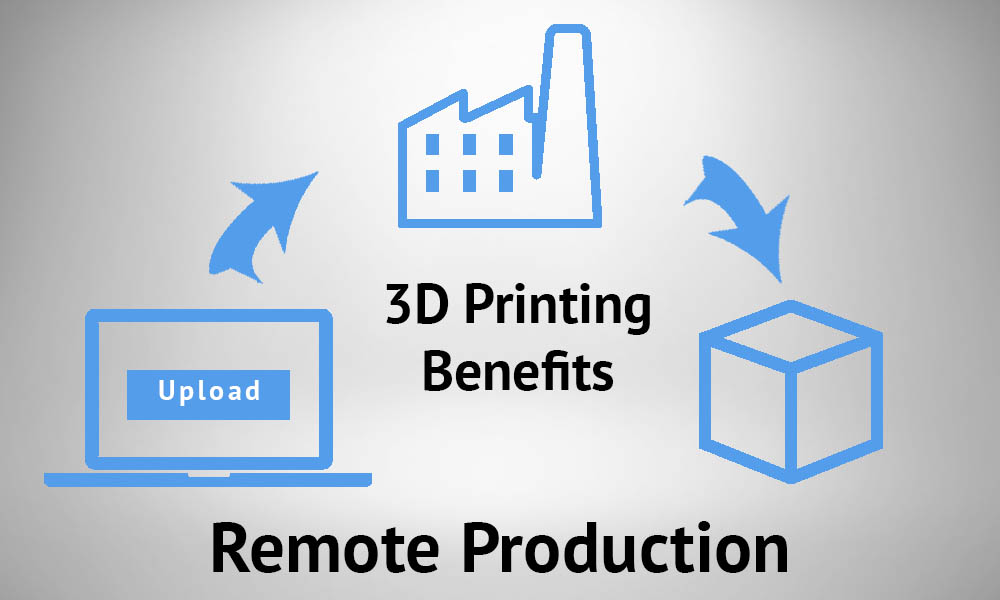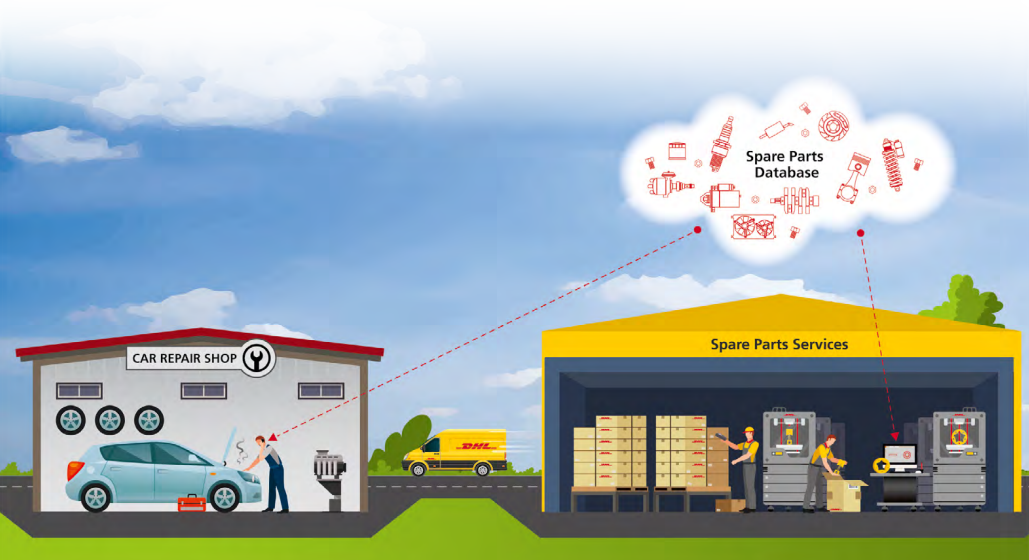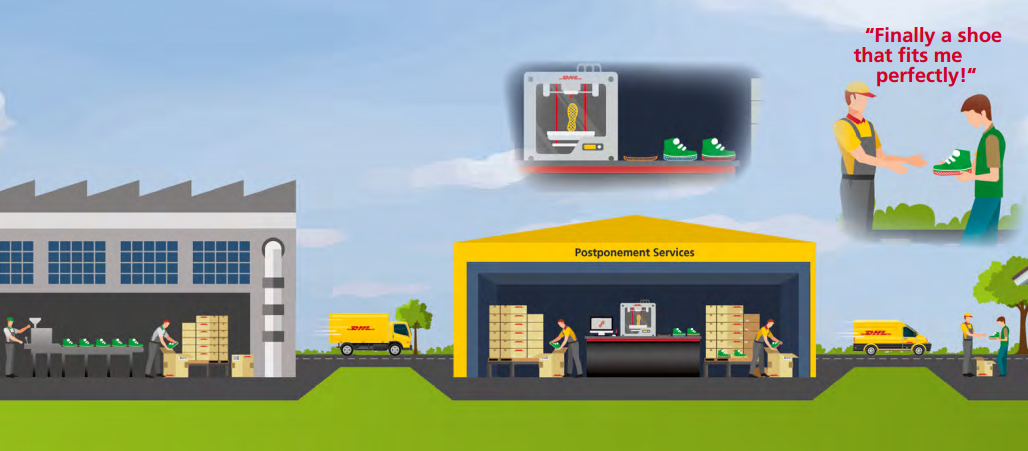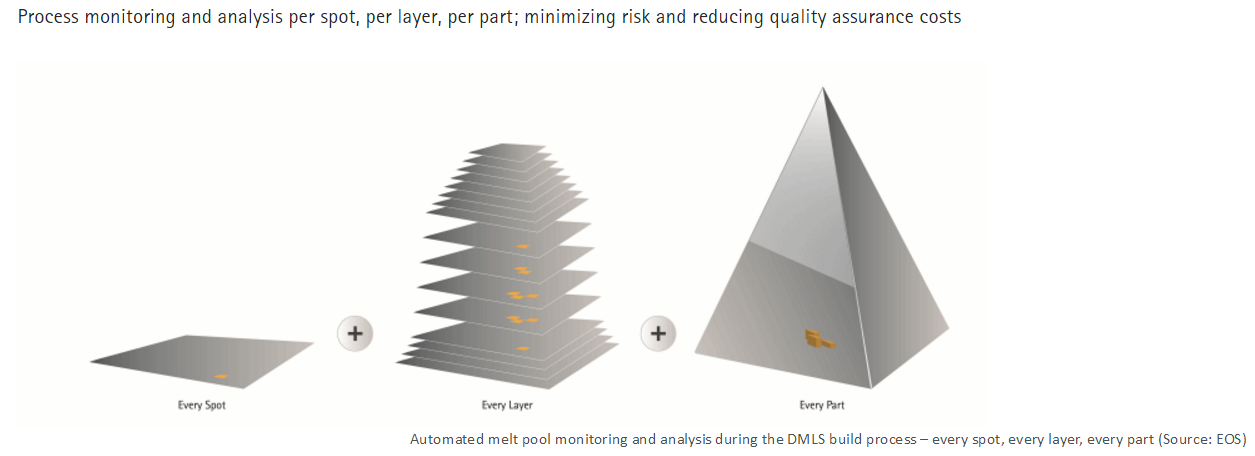The Benefits of 3D Printing: Remote Production
Posted By Capucine Lonjon on Mar 8, 2017 | 0 comments
At Sculpteo, we are convinced that 3D printing is changing the face of manufacturing, engineering and design in many ways.
Today we tell you about how 3D printing enables Remote Production. What is remote production? How is it creating a new paradigm? How can it help your business? What are the challenges and questions that arise with it?
Read the previous episodes of our Benefits of 3D printing here!
Benefits of 3D Printing: Impossible Designs and Internal Channels
Benefits of 3D Printing: Mass Customization
Benefits of 3D Printing: Integrated Assembly
Benefits of 3D Printing: Tooling
3D printing was born in the 1980s, thanks to visionary pioneers. In less than a decade, the main 3D printing technologies were set: stereolithography (SLA), selective laser sintering (SLS) and Fused Deposition Modeling (FDM).
Since then, 3D printing has brought a deep and radical change in manufacturing. The biggest industries like aerospace were the early adopters of 3D printing, back in the 1990s. They were the first ones to see in 3D printing a revolution for manufacturing.
Machines are connected thanks to the Internet and allow remote production. Remote production implies that production no longer has to be centralized. Not only does it allow dematerialized supply chain but it also allows reduction of waste and the birth of what we call ‘virtual warehouses’. Remote production, since it radically changes the production paradigm, also brings out new challenges and questions, like the issue of file and data security.
I Remote Production: how a new age of manufacturing has arisen
It’s quite easy to see the impact of remote production in your business. If you have factories in China to produce plastic parts, you can now imagine have the parts directly locally produced.
The impact on manufacturing is huge. Dematerialization of the supply chain has many consequences that will change the face of manufacturing.
1. Dematerialization of the supply chain
3D printers are connected to smart devices. At Sculpteo, we turned our standard SLS printers into connected machines thanks to a cloud service. With IoT, production has entered a connected or we can even say, an interconnected system, where data and files can transfer very easily from a part of the world to the other. Supply chain is taking on another form. Manufacturers have to take the reality of Digital Manufacturing into account in their manufacturing strategies.
It must be noted that changes to expect thanks to 3D printing in the supply chain concern the production of highly complex and customizable products and spare parts. In fact, according to Wohlers, ‘decentralization will occur only in cases where the products are fairly simple and don’t require a lot of assembly or finishing.’
With 3D printing, barriers to entry various sectors are falling. The need to invest into huge manufacturing infrastructures is less and less obvious. Smaller companies can aim for competing with bigger companies. New business models can create a real competitive advantage. There is a real need for big businesses to change their strategy before the industry changes around them and before them.
Dematerialization of the supply chain changes a lot the manufacturing processes. What does it change the face of manufacturing?
2. Top 6 changes due to remote production
We can see a manufacturing hybrid model is emerging. 3D printing is not fighting against traditional manufacturing. Traditional manufacturing is evolving to produce hands in hands with 3D printing. In a production process, some components will be centrally produced, and some other components added nearer to the customer. For example, the GE Aviation business announced they’ll produce its new LEAP fuel nozzle from both 3D-printed and conventionally manufactured parts.
Here are the main consequences of remote production brought by 3D printing:
-
Shipping raw material rather than assembled parts
Shipping raw materials to assembly plants is much easier and cheaper than shipping directly produced parts. What’s more, 3D printing raw material (if we consider powder) is more compact than more traditional materials. As it goes, fewer finished components will be shipped, since on-site 3D printing will be more efficient and less costly. This way, your business can be less dependent on energy prices and cargo transportation costs.
-
Reduction of manufacturing waste
In traditional manufacturing, there is a lot of waste. Thanks to additive manufacturing, and it’s even truer for metal additive manufacturing, industries will be more and more able to reduce their wastes. ‘Today we need 300 tons of material to build 32 tons of parts with 3D printing, we only need 30 tons of metal powder’ says Sander from Airbus.
-
Creation of ‘virtual warehouses’
Due to the ability to produce low-volume parts on demand and in small quantities, industries will be able to lessen warehouses and inventory requirements.
Warehoused parts will be replaced by ‘virtual inventories’ and design files. Files will be electronically shipped to a local manufacturing depot, an online 3D printing service (service bureau), or even to individual 3D printers.
-
No need for inventory
Remote production benefits include all the benefits of 3D printing. It is possible to produce small series, which leads to the opportunity to reduce and even eliminate inventory. What’s more, there is no need to inventory tooling equipments such as cast or molds. Everything can be printed on demand, in only a few days. It reduces costs and permits more flexibility in the production and delivery process.
-
A spare parts ‘industry’
According to the DHL (worldwide logistics supplier) report, ‘3D printing and the future of supply chains’, the spare parts sector is one of the first areas to be disrupted by the proliferation of 3D printing. Their study reports that the actual excess inventories can sometimes exceed 20%, which is very expensive for companies. It is clear that it brings inefficiency to the supply chain and that 3D printing can help the system.
In traditional manufacturing, a minimum of reorder or reorder quantity is absolutely necessary. No need with 3D printing! Printing one single part is the same than printing a hundred!
See our blog post on ‘3D Printing Spare Parts Against Planned Obsolescence’.
-
Getting closer to the market
Remote production means ‘near-sourcing’ and local production. Facilities become closer to the market. It allows a more flexible and responsive manufacturing process, as well as greater quality control.
3. What are the different kinds of remote production?
To 3D print an object, the only things you need are a 3D printer and a 3D file. That’s quite easy! In their ‘3D printing and the future of supply chains’ report, DHL, the renowned logistics supplier, made very understandable drawings to explain how the supply chain is evolving with 3D printing.
Production can be remoted in the following cases:
1. Spare parts services
Thanks to ‘virtual warehouses’, spare parts industry can develop.
For example, the company Kazzata has developed one of the first virtual warehouses.They established a CAD file repository for obsolete, slow moving and rare parts, easily available via 3D printing.
Mercedes Benz Trucks has launched a 3D printed spare parts service. They announced they allow their customers to 3D print more than 30 different spare parts for cargo trucks. It enables the customer to have their piece more quickly, thanks to the nearest 3D printing facility.
2. Postponements services
Production can be at the same time centralized and decentralized. Mass Customization is one of the benefits of 3D printing.
3. End-of-Runway-Services
Aeronautics was one of the early adopters of 3D printing, back in the 1990s. Today, this sector is very advanced in implementing this technology! Companies such as Airbus are thinking of having 3D printers to remote production of spare parts directly in airports.
4. Individualized direct parts
Jean Pletincks, MSF (doctor without border) director of logistics is missing a spare parts to repare of machine in a hospital of Kinshasa, in the Democratic Republic of Congo. In an interview to inverse.com, he says “The spare part that’s missing is a very simple,” One is a plastic spare part, and the second is just a piece of rubber, and the third is an electronic part. And if I have a 3D printer I would just print it on the spot.”
In fact, beyond all the advantages it can have strictly for manufacturing, 3D printing can save lives in remote locations!
II Consequences & arising questions/challenges
We saw in the previous paragraphs that remote production is a real benefit for the future of manufacturing. But, if you intend to introduce 3D printing and a dematerialized supply chain in your business model right away, there are some questions you need to address first. When talking about interconnected machines and the Internet, there is no doubt that data and cybersecurity have to be tackled. It is a real issue for the years to come, and some companies are not investing in remote production mainly because they don’t want to take a risk with sensitive data. What are the risks and how to counter them?
Cybersecurity: what risks should you take into account?
Data privacy and intellectual property
Protecting the content of your 3D file against leaks, counterfeiting and illegal reproductions is essential, and new solutions need to be and are being developed specifically to protect 3D files.
Cyber sabotage, hacking attacks
Although open source creations have proved Internet can be a place for collaboration, hackers are still in the field. New cybersecurity methods and tools are needed to protect from these new attacks.
A cybersecurity and material engineers team at NYU Tandon School of Engineering has held a study to analyze which cyberattacks could untrusted parties imagine for 3D printing processes. They analyzed two situations:
Printing orientation can be altered
Changing of orientation of the file in a 3D printer can alter the strength of the final part by 25%. Orientation is fixed during the production run, which can makes it easy for a hacker with bad intentions to change orientation and alter the final object.
Insertion of fine defects
Through their experience, the NYU Tandon School engineers found that the defects were undetectable by common industrial monitoring techniques, such as ultrasonic imaging. Because of small defects a bad intentioned hacker could occur, objects can alter over time. For metal 3D printing, it can be even worth and the defects can cause a crack in the part.
Techniques to protect your files and dematerialized production: encryption and manufacturing monitoring
The security of a 3D file has two dimensions. The possibility to ‘lock’ the file via encryption and the guarantee that a 3D file is well-manufactured.
Encryption of a 3D file
Encrypting a file is the equivalent of creating a DRM system (Digital Rights Management). An encrypted file contains the dimensional information of the object with copyright constraints to avoid counterfeiting.
Encryption streams the file; it is assembled again when decrypting, which means the information is only delivered after decryption. In an online 3D printing service, only the entitled staff can access the data of the file.
In an ideal system, decryption would happen at the 3D printer. It can be possible for files that have an already-proven design, and where high-security is needed. The Military is thinking of such applications.
Manufacturing monitoring
To bind quality standards, especially for small series, manufacturing monitoring is absolutely essential. Some 3D printer manufacturers such as EOS are providing tools to make sure the part was correctly manufactured (orientation, layer thickness…).
One could also imagine creating a quality control stamp, given digitally to an object, that would guarantee where and how the object was designed and produced. This digital stamp would be similar to actual stamp provided in traditional manufacturing.
File and processes protection for 3D printing will become a key sector
Companies like 3Dtrust and Authentise are looking into solutions to protect 3D files and dematerialized production lines efficiently, and guarantee to businesses that invest into remote production that they can trust, track and understand the process. One can imagine that such solutions will become more and more crucial and demanded in the future. In the mid time, online 3D printing services can protect your file and master the use of the machines for you!


 Connect with Google
Connect with Google Connect with Facebook
Connect with Facebook




